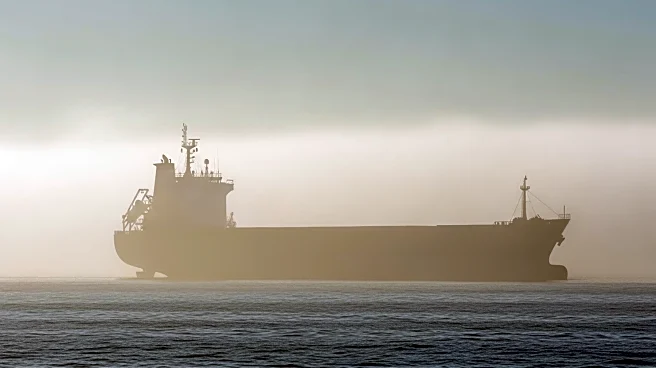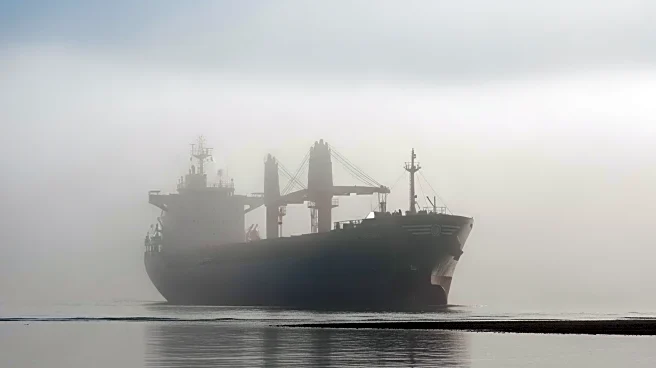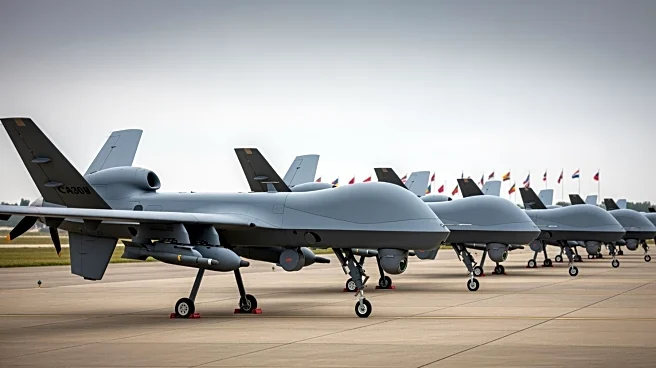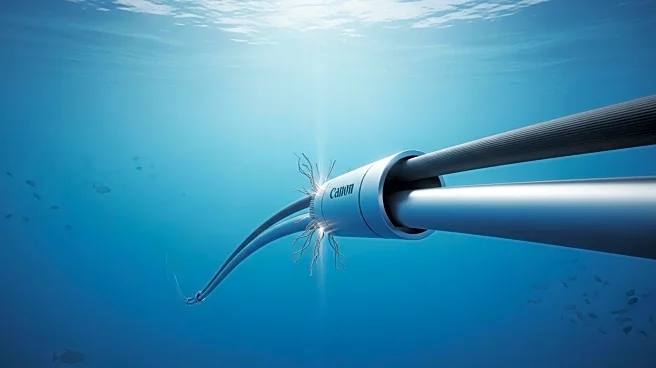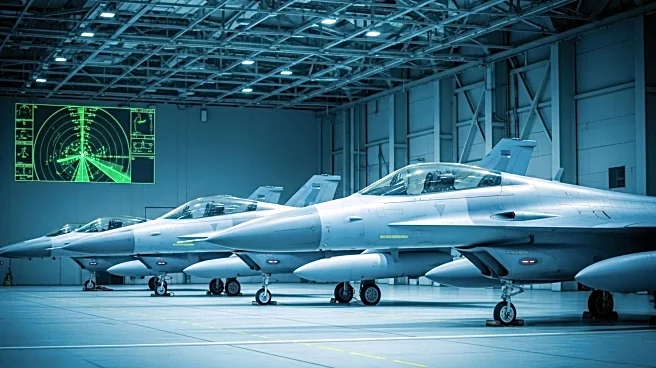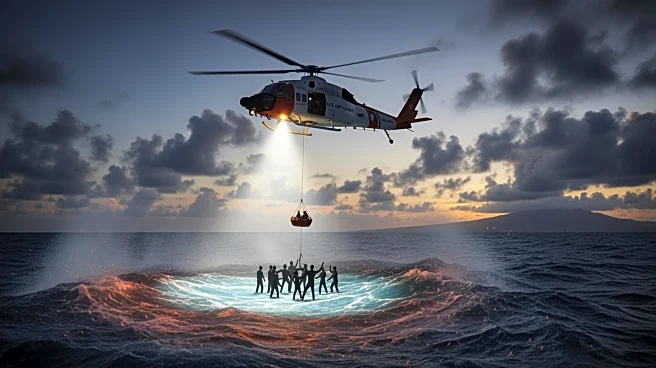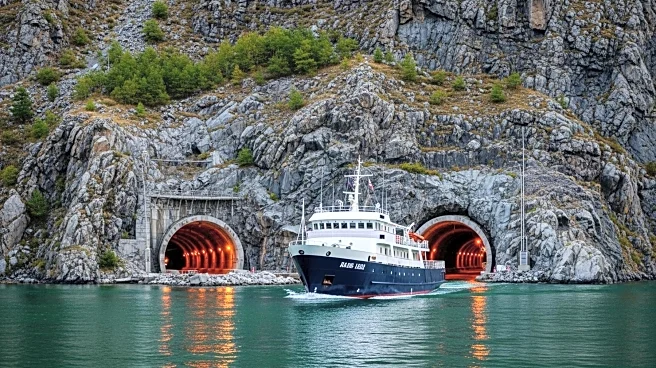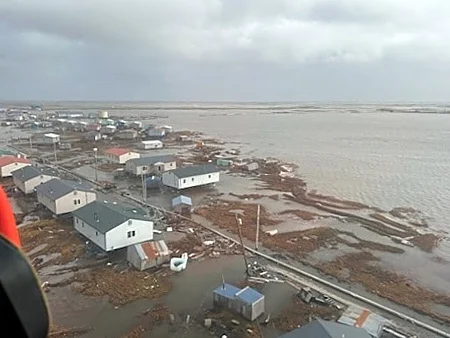What's Happening?
A Norwegian cargo ship, Hagland Captain, grounded under the Svinesund Bridge linking Norway and Sweden due to heavy fog. The incident occurred at approximately 0100 local time as the vessel was transporting
timber. The Swedish Coast Guard, along with the Swedish Maritime Rescue Service, responded to the situation, preparing environmental equipment in case of an oil leak. The ship carried 88,000 liters of oil, including 85,000 liters of diesel. Divers surveyed the hull to assess the grounding and determine the best course of action. By afternoon, the fog lifted, allowing two salvage tugs to refloat the vessel during high tide. The ship was moved to Halden, Norway, for further inspection. The Coast Guard conducted alcohol tests on the crew and reported no suspicion of criminal activity.
Why It's Important?
The grounding of the Hagland Captain highlights the challenges of navigating in adverse weather conditions, particularly in areas with significant infrastructure like the Svinesund Bridge. The incident underscores the importance of maritime safety protocols and the readiness of rescue services to prevent environmental damage. The successful refloating of the vessel without injury or pollution demonstrates effective crisis management. This event may prompt shipping companies to review their navigation strategies in fog-prone areas, potentially influencing operational policies and training programs to enhance safety.
What's Next?
Further surveys of the Hagland Captain will be conducted to ensure the vessel's seaworthiness before resuming operations. The shipping company may evaluate its procedures for navigating in foggy conditions, possibly implementing stricter guidelines or investing in advanced navigation technology. Authorities might also review the incident to improve response strategies for similar situations in the future, ensuring the protection of vital infrastructure and the environment.
Beyond the Headlines
The incident raises questions about the adequacy of current maritime navigation systems in handling extreme weather conditions. It may lead to discussions on technological advancements in ship navigation, such as enhanced radar systems or AI-driven solutions to improve visibility and decision-making during foggy conditions. Additionally, the event could influence regulatory bodies to consider stricter safety measures for vessels carrying large quantities of oil.
